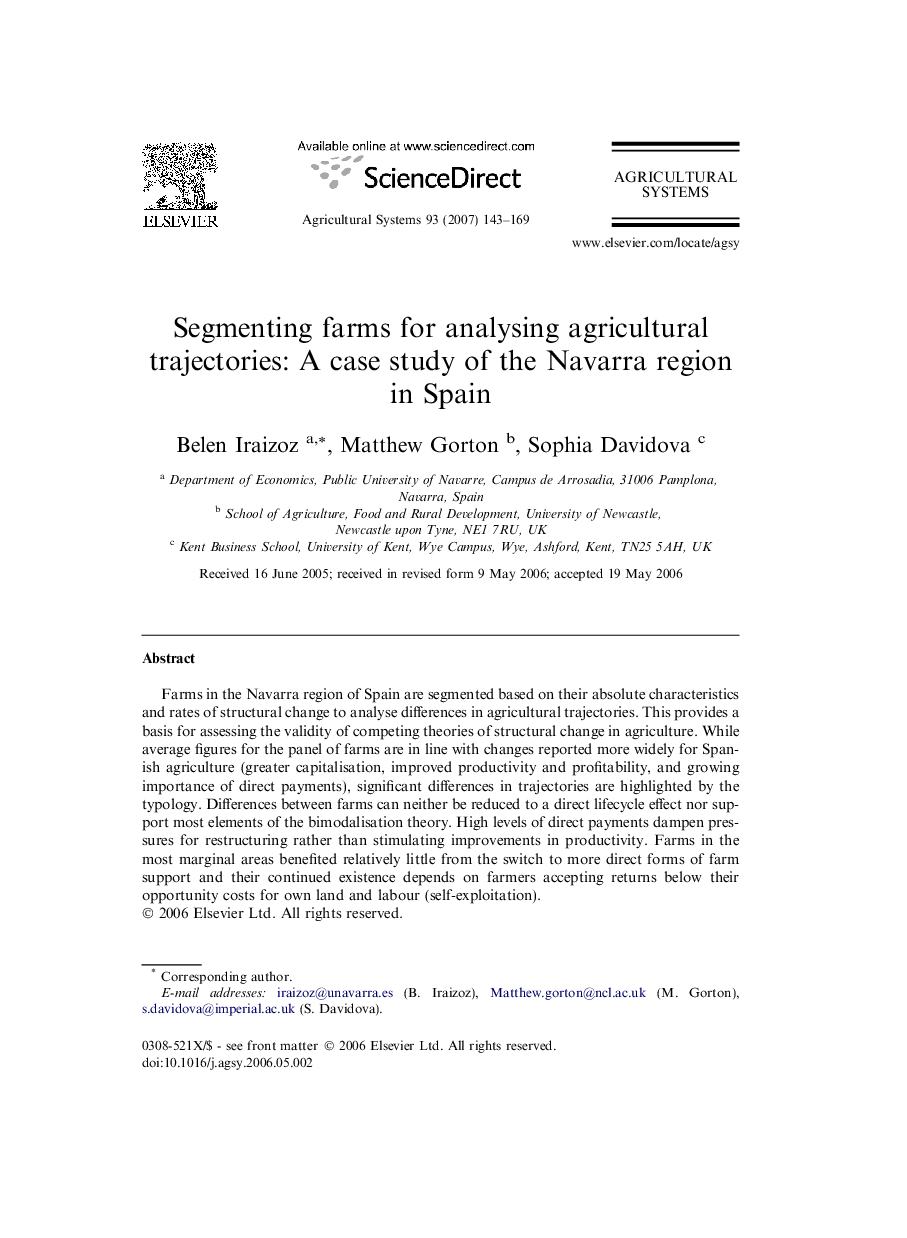| Article ID | Journal | Published Year | Pages | File Type |
|---|---|---|---|---|
| 4491855 | Agricultural Systems | 2007 | 27 Pages |
Farms in the Navarra region of Spain are segmented based on their absolute characteristics and rates of structural change to analyse differences in agricultural trajectories. This provides a basis for assessing the validity of competing theories of structural change in agriculture. While average figures for the panel of farms are in line with changes reported more widely for Spanish agriculture (greater capitalisation, improved productivity and profitability, and growing importance of direct payments), significant differences in trajectories are highlighted by the typology. Differences between farms can neither be reduced to a direct lifecycle effect nor support most elements of the bimodalisation theory. High levels of direct payments dampen pressures for restructuring rather than stimulating improvements in productivity. Farms in the most marginal areas benefited relatively little from the switch to more direct forms of farm support and their continued existence depends on farmers accepting returns below their opportunity costs for own land and labour (self-exploitation).
